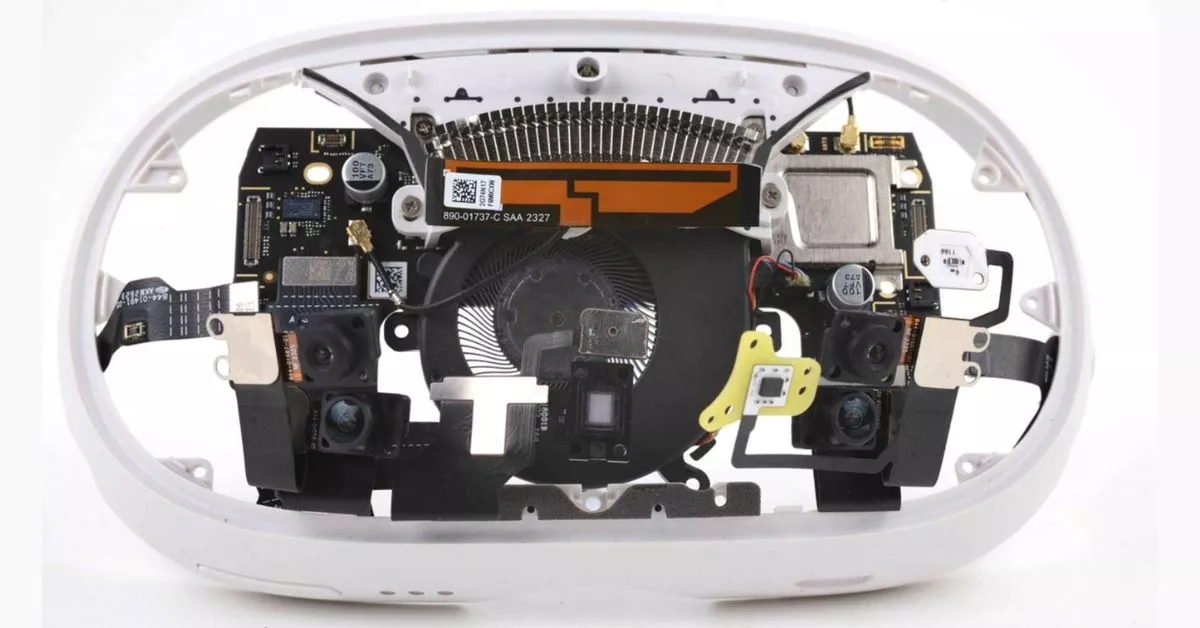In a groundbreaking revelation, the renowned tech analysis firm, iFixit, has embarked on an exhaustive dissection of the highly anticipated Meta Quest 3. This deep dive has unveiled the captivating technological marvels concealed beneath its sleek exterior. A visually stunning video of this teardown has been unleashed, drawing praise for its exceptional cinematography, and it’s now accessible to the public. Join us as we uncover the inner workings of the Meta Quest 3, Meta’s latest immersive virtual reality (VR) innovation.

Unearthed Technological Marvels
The Meta Quest 3’s teardown has unveiled a trove of exciting features. Notably, it sports a curved heatsink situated above the fan, while also retaining the Time of Flight depth sensor, conspicuously absent in the Quest Pro. The device showcases pancake lenses with diagonal LCD lines beneath them, along with a word of caution about potential tearing issues.
Perhaps most intriguing is the Quest 3’s substantial battery pack, hinting at a shift from battery life to performance. The device’s reliance on Qualcomm chips for Wi-Fi and power management underscores Meta’s unwavering commitment to delivering robust and dependable connectivity for its user base.
Revolutionary Controller Insights and Challenges
iFixit’s teardown also delves deep into the Quest 3’s revolutionary controllers. These controllers employ infrared LEDs for 3D tracking. However, they miss the mark with the absence of drift-resistant Hall effect joysticks, a feature longed for by avid gamers and tech aficionados.
While casual users may not find this omission a deal-breaker, it might significantly impact the purchasing decisions of hardcore gamers seeking precise control for an optimal gaming experience.
Repairability Score and User Serviceability
iFixit’s meticulous analysis reveals that, compared to the Quest Pro, the Quest 3 boasts improved repairability. Yet, it secures a modest repair score of four out of 10. The intricate layers of components and the difficulty of accessing the battery stand out as primary reasons for this underwhelming score.
This may raise concerns for individuals who prefer to self-service their devices or those residing in regions with limited access to official Meta service centers. The low repair score could also be a point of consideration for environmentally conscious consumers who lean toward devices with extended lifespans and a reduced generation of electronic waste.
Key Insights from the Teardown
In sum, iFixit’s comprehensive exploration of the Meta Quest 3 offers invaluable insights into the device’s internal architecture and technological strides. While it underscores Meta’s commitment to enhancing performance and connectivity, it also highlights areas in need of improvement, such as joystick functionality and device repairability.
This in-depth analysis serves as an indispensable resource for prospective buyers, tech enthusiasts, and industry analysts, shining a light on what lies beneath the polished surface of one of the most eagerly awaited VR devices in the market today.
ALSO READ: Angry Miao AFA R2 Review – A Premium Mechanical Keyboard Experience Worth Every Penny
GEEKOM Mini IT13 NUC13 Mini PC Review – A Compact Powerhouse for All Your Computing Needs









